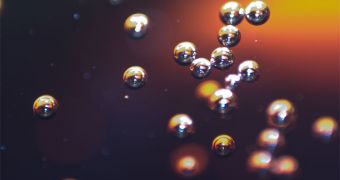For many years, physicists and laymen alike thought that bursting bubbles was a fairly clear-cut phenomena – simply breach their surface, and the sphere would disintegrate. In new studies, experts are, however, beginning to show the holes in this idea, arguing that the process is a lot more complex than visible at first sight. They say that the “parent” bubble actually bursts into several, “daughter” bubbles, which can be seen clearly on camera, if a picture is snapped at just the right time. The secondary sphere appear in a ring-shaped pattern, right in the spot where their precursor burst, LiveScience reports.
“It's probably happening around you any time you do dishes. What surprised me was just how ubiquitous it was,” says Harvard University student James Bird, who was the leader of the new investigation. He conducted his work under the directions of Harvard professor Howard Stone. The conclusions are not without direct, applicable consequences in various scientific fields. When it comes to modeling the climate, for example, experts have to conduct precise work in determining how bubbles in the foam on the surface of the water affect temperatures. The new data could come as a new tool for refining such predictions.
The work was carried out by a team of graduate students who remained in the lab one night and eventually ended up playing with bubbles. It was then that they observed the fact that structures did not pull an immediate disappearance act when broken. The group then used a slow-motion camera to capture the way in which bubbles exploded and, sure enough, they found the pattern. The students then tested the finding on other materials as well, and the correlation held true. They then built a computer model to account for the physics behind this phenomenon.
“It is something that we've probably all seen and just completely taken for granted and never even noticed it was there or cared. It's one thing to say this is a neat party trick, but as I started looking more into the [scientific] literature, I was really struck by how important bubbles are,” Bird explains. The Harvard team already published its discoveries, in the June 10 issue of the esteemed scientific journal Nature. The students say that the bubbles in the secondary rings also burst into rings of even smaller bubbles, a trend that continues until the size of the bubble is nearing the thickness of the thin film of material that makes it up.

 14 DAY TRIAL //
14 DAY TRIAL //